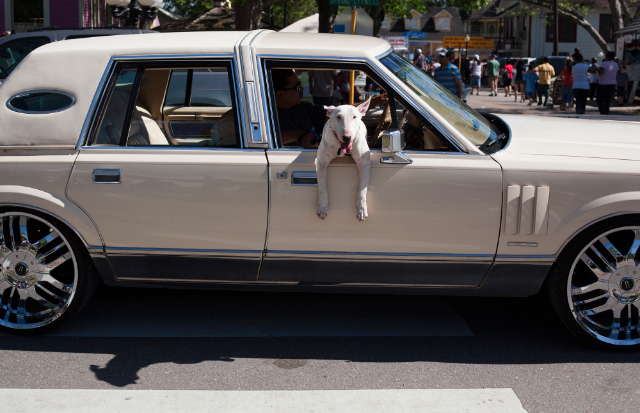New art exhibit to raise animal awareness
Among the many charming traits Davis is known for, being an animal-friendly environment often stands out. Soon, the animal compassion the city of Davis is known for will be taken to a whole new level. From Oct. 10 to Nov. 14, the Davis Art Center will be hosting Sheltered, an art exhibit devoted to raising awareness of animal homelessness and organizations in support of bettering animal lives. The nationally-curated project features works by artists throughout Davis as well as the country.
There will also be opening and closing celebrations for the exhibit’s run. On opening night, Sheltered will welcome guests to its free reception from 6 to 8 p.m. Scheduled for the opening reception are live tunes, art activities, wine samplings and vegan-friendly treats for both pets and owners alike. The closing reception will feature a talk given by curator Ryann Casey, a Philadelphia-based photograper and art history professor.
MUSE connected with Ryann Casey as well as Sheltered organizer and UC Davis alumna Charlene Burnett to talk about the fusion of animal awareness and art. Together, they shared with MUSE the purpose and passion behind Sheltered.
MUSE: What inspired you to organize Sheltered? Was there a specific event or was the idea always a growing passion?
Burnett: I’ve always worked with animals. In my early 20s, I worked at a veterinary hospital. I operated the crematorium. Disposing of animals, along with the trash, continues to haunt me. Since I work with an animal rescue organization and animal advocacy groups, I’m constantly barraged by visual images of animals who are red-listed for euthanasia. Abandoned, surrendered, unclaimed, lost and forgotten, these animals will never make it out of the shelter alive. Yet, so many people seem to be completely unaware of how we as a society dispose of unwanted, healthy pets.
MUSE: How did you start expressing your passion for animals through art?
Burnett: After joining HeARTs Speak, an organization of professional artists, I was exposed to art created for the purpose of advocating for the lives of animals. I researched and discovered other visual artists who left me stunned by their visceral narratives. I am particularly pleased by the artists that our curator, Ryann Casey, included in Sheltered. In “Pack,” photographer Stephanie Paine used a handmade pinhole camera to capture images of street dogs in Istanbul. In “Hit Me,” artist Kristen Tabone Woodward addresses children’s games that emulate antagonistic relationships with domestic animals.
MUSE: In what ways can art convey messages from other methods of expression?
Casey: Art has the capacity to not only express what the artist intended but to reach the viewer in often complex and personal ways. Art is not just a single image or object, but an expression of a range of emotions and connections the viewer places on the work as well. Therefore, art has the unique ability to become deeply personal and imaginative for the viewer. With messages involving animal welfare and cruelty, there is no better lesson than the one we’ve already experienced — and art provides a framework for those connections again, a way for the viewer to reflect through the visual image to memory and emotion.
MUSE: What types of pieces can we anticipate? Are there certain mediums you feel more connected or drawn to?
Casey: The show was open to all mediums with hope that the greater the variety (of both mediums and perspectives), the more probable it was for the viewer to feel engaged. From the imagined, dreamy imagery of Susan J. Silvester to the detailed realism of Jeri Allison’s portraits to the abstracted pinhole views of fur by Stephanie Paine, the work will be diverse and extensive. Although I don’t have a favorite piece or medium that I look for, photography will always be one of the mediums I am drawn to the most. The work of Isabella La Rocca (which challenges the viewer with images of individual animals who are imprisoned and exploited) and Stephanie Paine (tangible moments of bonding and connection) are some of the ones I’ve connected to the most, but I can honestly say all of the work is deeply compelling to me.
MUSE: Do the pieces all center on a common theme?
Casey: Sheltered surveys the connection we have with the natural world and how our behavior impacts the individual relationships we form with non-human animals. The show is framed under the general guideline of shelter or “home,” but expands further by discussing the treatment of species outside of our own. [It also] critically questions our ability to form compassionate bonds with non-human animals.
Burnett and Casey said they hope Sheltered strengthens Davis’ love for animals through the power of art. They expressed that in a bigger picture, the project intends to open eyes to the importance of giving animals proper homes and, consequently, the lives they deserve. For more information on the exhibit and ways to support animal organizations, visit Sheltered’s site at shelteredartshow.org.
Photo by Ann Wright. Image courtesy Davis Arts Center.
Photo by Rebecca Finley. Image courtesy Davis Arts Center.






